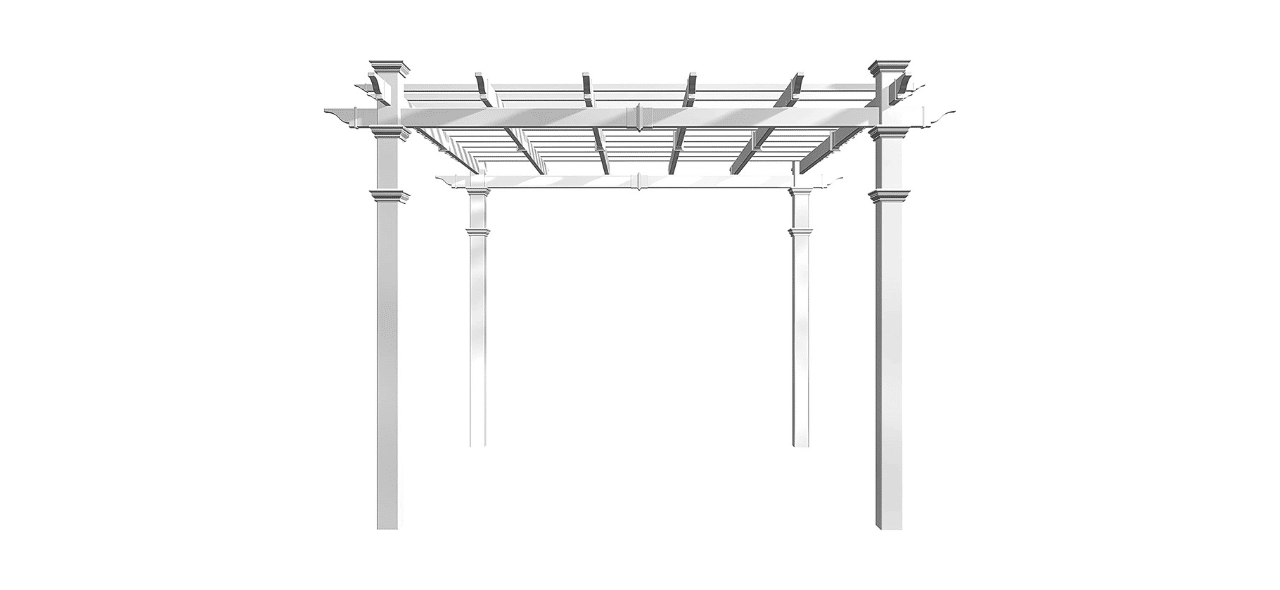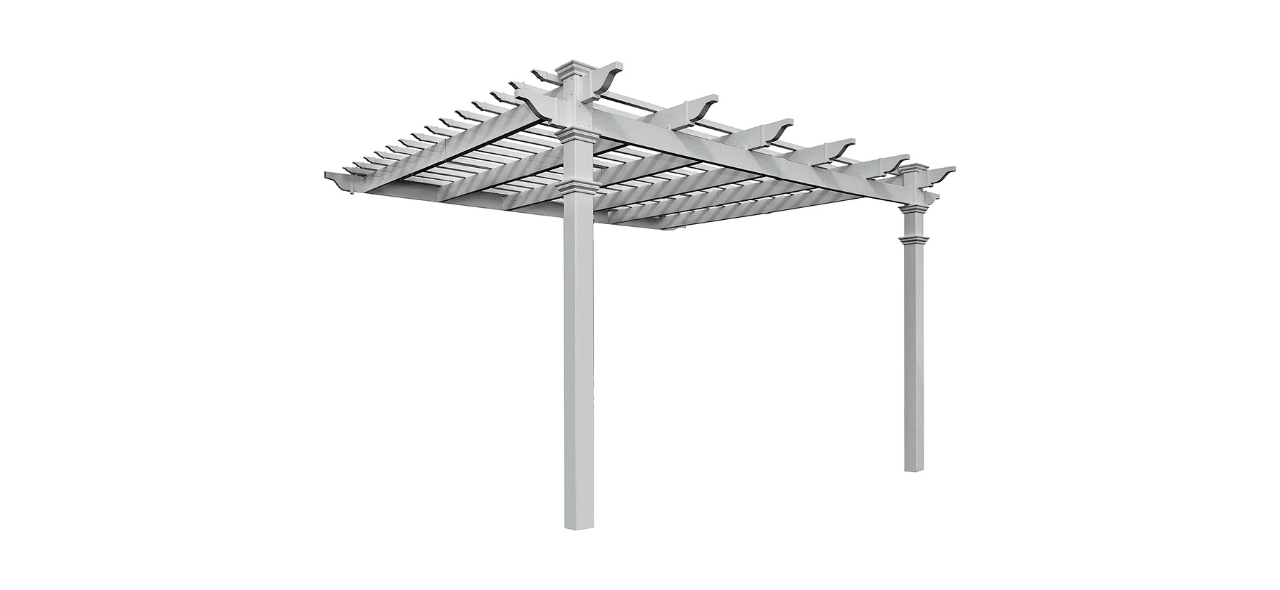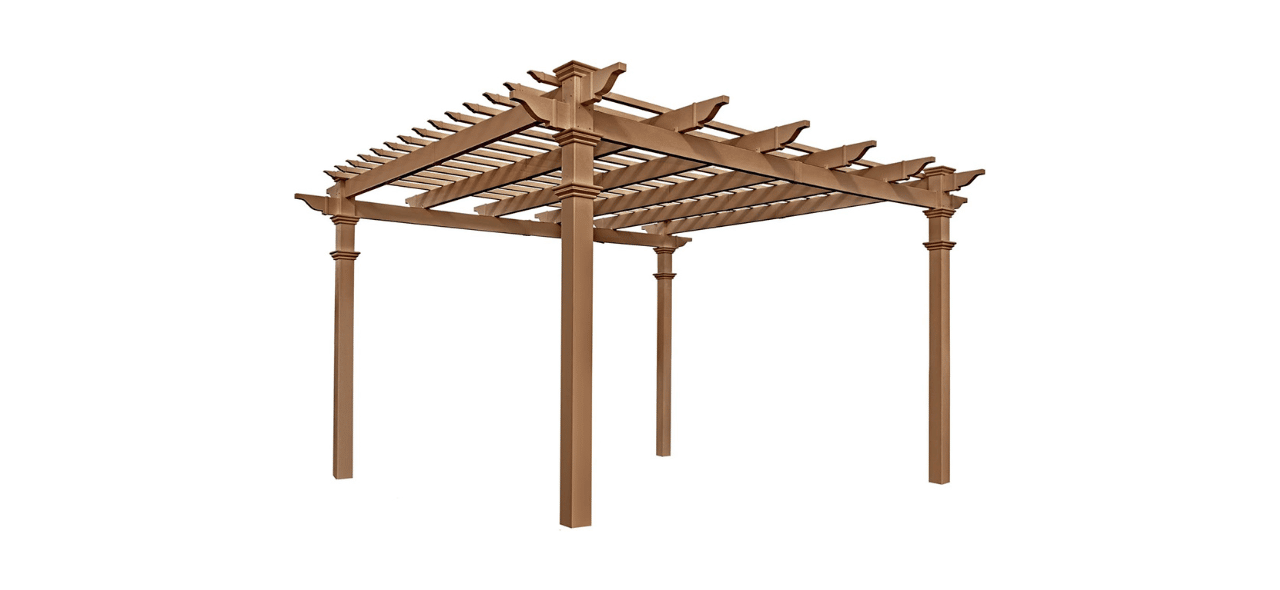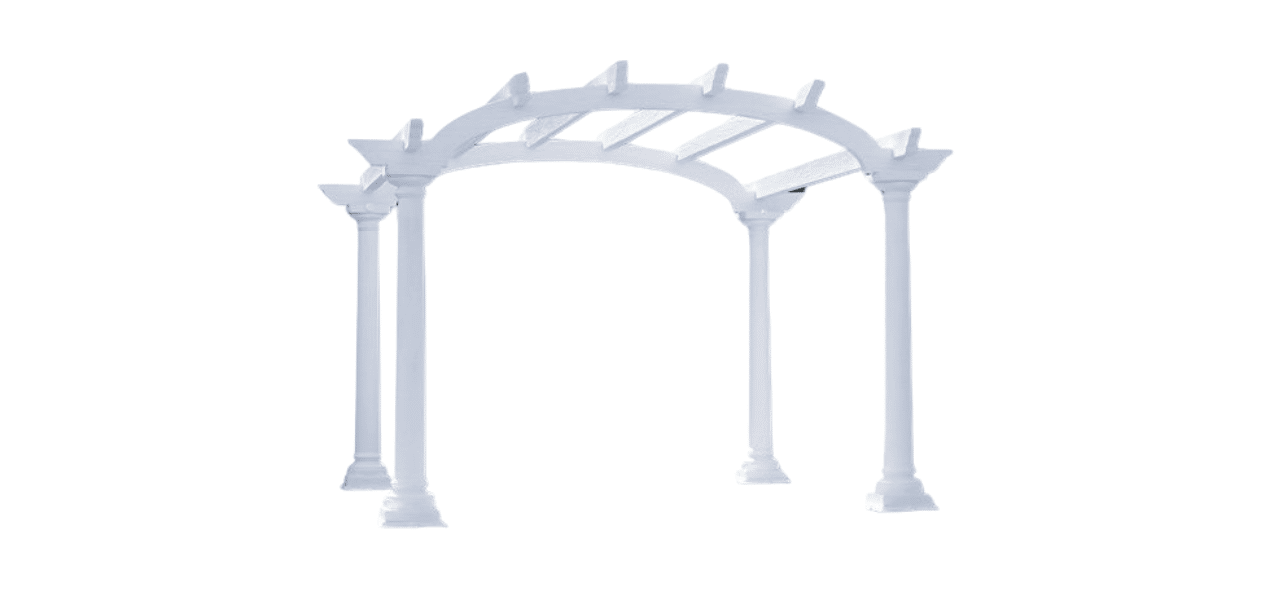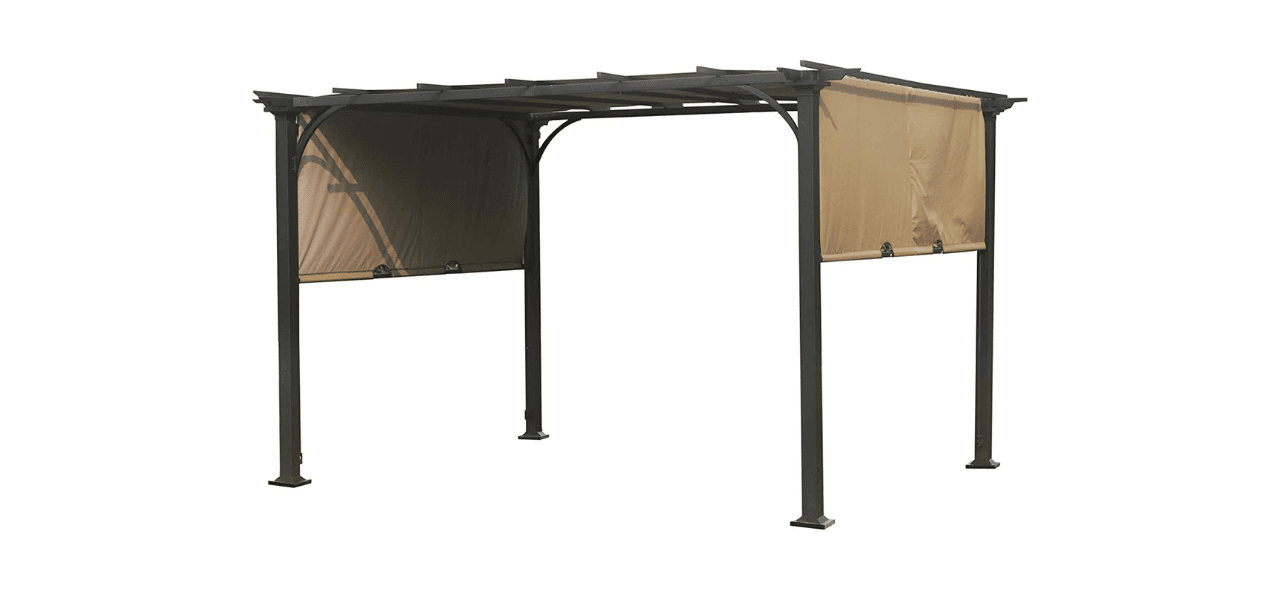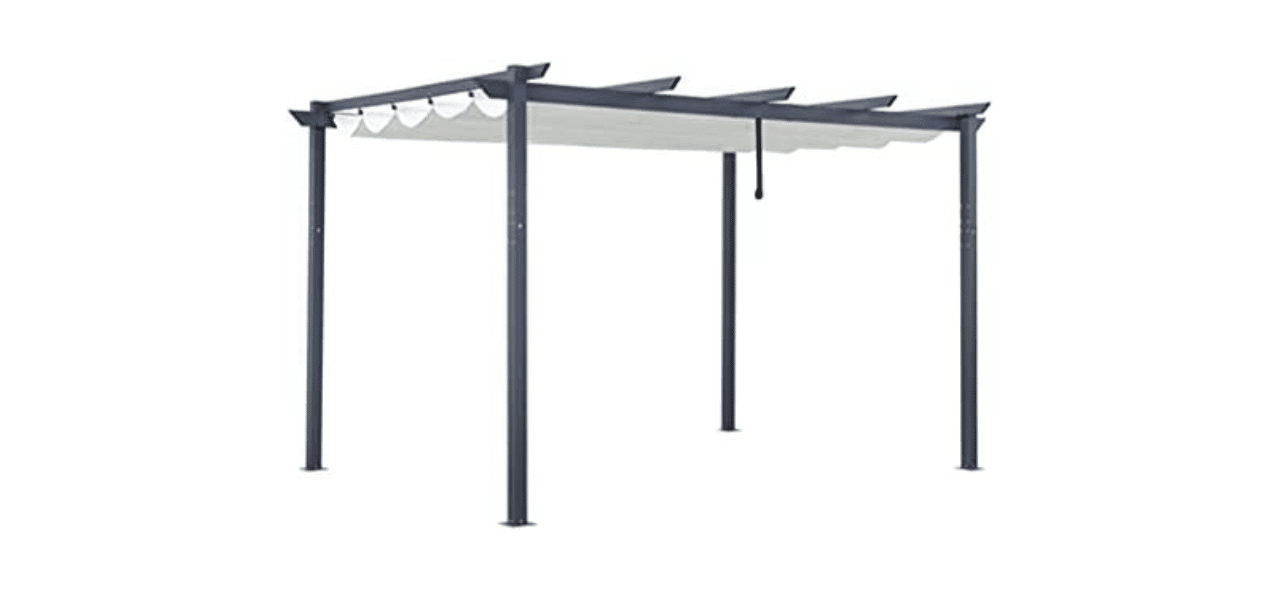Are you planning on getting a landscaping feature for your new home’s outdoor space?
If you like spending time outdoors, you need a structure that can protect you from the sun and rain. One of the most popular shade embellishments is the pergola. A pergola is a structure that can be freestanding or attached to a home that is supported by posts with a latticed open roof. It is used to accentuate or cover patios, seating areas, decks, porches, gardens, and more.
If you want to have more shade and increase privacy, you can add vines, flowers, curtains, or canopies for additional protection.
Before you get one, you should know that the pergola comes in different types of materials. It’s best to consider a material based on your climate, style of your home, maintenance capability, and preferred design.
Aside from wood (see: choosing the type of wood for your pergola), here are other materials a pergola can be constructed with.
Vinyl Pergola
One of the most popular materials used for pergolas is vinyl. People prefer this plastic material because it is affordable, durable, and customizable. Its sturdiness doesn’t compromise the appearance or style. You can choose a design based on your needs or preferences, but this material usually comes in simple colors such as white, ivory, and beige which gives off a more clean and formal look. So if you have a rustic theme, it might not go well with it.
This material is the less expensive plastic material you can get for your pergola. It’s lightweight so you won’t need additional posts to cover larger spaces. But it’s not the strongest material since it can sag or soften if frequently exposed to inconsistent temperatures.
This material doesn’t require much maintenance since it doesn’t need to be stained or painted to maintain its appearance. An annual power wash is enough to keep it looking brand new. Vinyl is also a weather-proof material that is resistant to rot and insects.
Compared to wood and metal, a pergola made out of thick vinyl can withstand harsher outdoor conditions. It also won’t decay, rust, or degrade – so if you want a structure with not much upkeep, go for this material.
If you don’t prefer a customized design, there are plenty of vinyl pergola kits available online. It’s less expensive, quicker, and easier to install. The pergola above is a freestanding structure and was molded with hi-grade and premium polymers around traditional structural elements to make it look like wood.
This product may look like wood but it has the maintenance benefits of vinyl, and it comes with a twenty-year warranty.
Here is an example of a pergola that can be attached to a home. The product above is a vinyl pergola that connects to a home. It was also similarly modeled to the freestanding version above to look like a wood pergola.
You can also get a pergola with a blend of vinyl and recycled wood pulp. The product above is an example of mixing these materials. It has the same look and color to wood and it has the benefits of a low-maintenance vinyl.
Fiberglass Pergola
Fiberglass is also a plastic material that is similar to vinyl. It comes in lighter colors such as beige or white, which makes it look clean and formal. This material is also resistant to rust and corrosion and more adaptable to different environments. Since it is non-porous, it is also moisture-resistant and can be easily maintained with an annual power wash.
One huge difference with vinyl is fiberglass is a stronger material and can be constructed longer than wood or vinyl. So if you’re going to create a larger pergola, it’s better to get fiberglass. Unlike its plastic counterpart, it won’t sag or soften when exposed to varying temperatures. But if this material is exposed to extreme temperatures or frequent wind pressure, it may also crack.
It may be stronger and more expensive than vinyl but it’s not the most pricey pergola material. It is also easy to install and there are plenty of fiberglass pergolas kits available online.
If you don’t prefer a specific design, then it will be cheaper, faster, and easier to have a fiberglass pergola in your yard, deck, patio, or garden.
Metal Pergola
If you want a more sleek and modern-looking pergola, these structures can also be made out of metal. This material comes in different colors and designs, but some people don’t prefer this material because it doesn’t have a rustic or formal-looking appearance.
It’s also highly resistant, durable, and weather-proof but it is not rust-resistant like the fiberglass or vinyl. To maintain metal pergolas, it should be galvanized and regularly sealed to prevent rust.
It’s customizable and can be bought pre-assembled. Most metal pergolas come in panelized kits which means it’s pre-cut, making it quick and easy to install. The types of metal often used for pergolas are steel and aluminum.
Steel pergolas are a great option for people who experience harsher weather conditions. This pergola can withstand bad weather and would last longer than the other materials. You can easily attach curtains or sheets to its frames and these linen materials will stay in place.
This steel pergola is built from solid steel and has frames that were given a powder-coated finish, which makes it more resistant to peeling, chipping, and cracking. It comes with a beige canopy to protect you from light rain and harsh sunlight.
On the other hand, aluminum pergolas are more cost-effective. It has a nonporous surface that can withstand different weather conditions and is also low-maintenance. It’s easy to install because it’s more lightweight compared to other materials.
This aluminum pergola comes with a retractable canopy that is UV-resistant. Most metal pergolas come with curtains and canopies so you don’t have to worry about rain, lack of privacy, or too much sun exposure.


